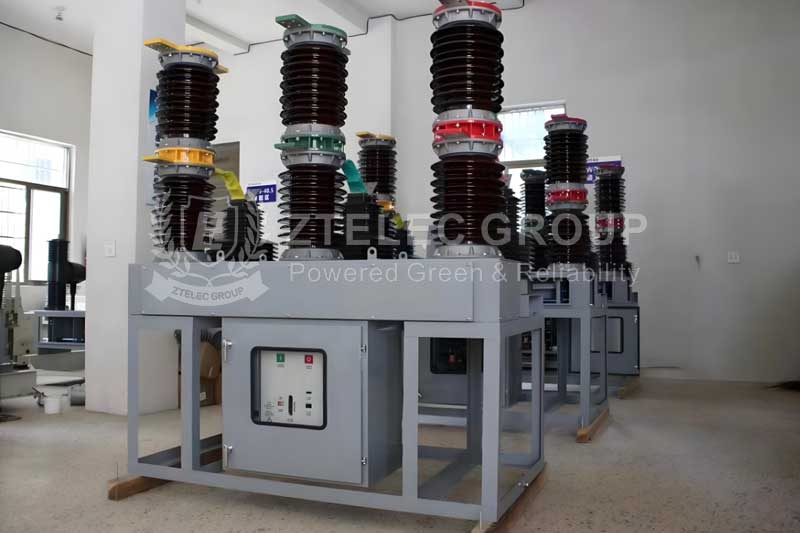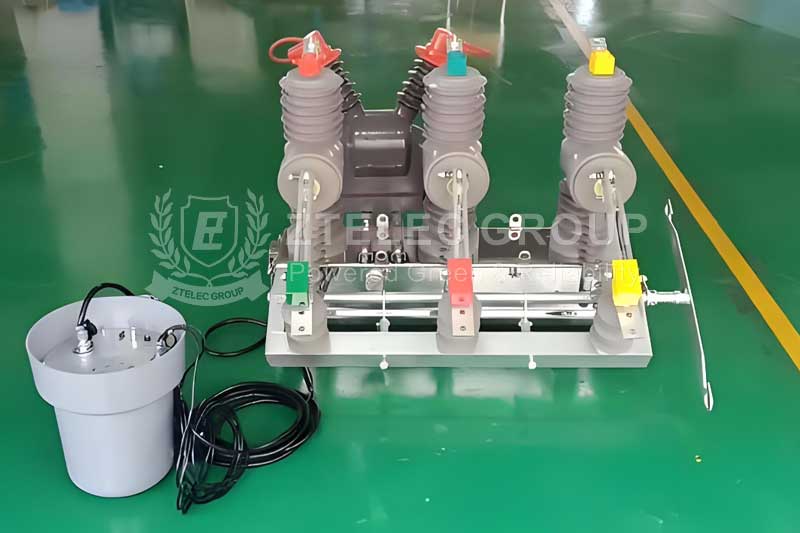How Does a High Voltage Circuit Breaker Work?
High-voltage circuit breakers are essential protective devices in power systems. Their function not only ensures the safety of the power grid but also promotes the efficient operation of electrical equipment. As the demands for safety and reliability in modern power systems continue to increase, the role of high-voltage circuit breakers becomes increasingly vital. This article will explore in detail the working principles, components, and applications of high-voltage circuit breakers.
Definition and Classification of High-Voltage Circuit Breakers
A high-voltage circuit breaker is a switching device designed for high-voltage equipment, capable of rapidly disconnecting or connecting a circuit under both normal and abnormal operating conditions. Based on different operating principles and structural designs, high-voltage circuit breakers can be classified into several types, including oil-immersed circuit breakers, gas-insulated circuit breakers, vacuum circuit breakers, and air circuit breakers. Among these, gas-insulated circuit breakers are particularly prevalent in modern power systems due to their superior insulation properties and versatility.

Working Principle of High-Voltage Circuit Breakers
The primary operating principle of high-voltage circuit breakers is to facilitate circuit interruption and closure using mechanical devices. Their essential function is to detect abnormal current conditions, such as short circuits and overloads, and to disconnect the circuit instantaneously, thereby protecting electrical equipment and ensuring overall grid stability.
The operation of high-voltage circuit breakers typically involves three stages: signal detection, the operating mechanism, and arc extinction.
1. Signal Detection: High-voltage circuit breakers are typically equipped with various protection devices, including overcurrent protection, overvoltage protection, and differential protection. These devices continuously monitor the operating status of the circuit and send a signal to the breaker’s drive system upon detecting any abnormal current or voltage.
2. Operating Mechanism: Once a signal is transmitted, the drive system quickly engages to separate the moving contacts from the stationary contacts of the breaker. The structural design of high-voltage circuit breakers ensures that this process can be completed in a very short time, allowing for swift circuit interruption and minimizing the risk of accident escalation.
3.Arc Extinction: In high-voltage circuits, circuit breakers generate an arc during the interruption process. The presence of this arc can lead to equipment damage; therefore, specialized devices are incorporated within the circuit breaker to quickly extinguish the arc. For instance, gas-insulated circuit breakers leverage the insulating properties of high-pressure gas to rapidly extinguish the arc, while vacuum circuit breakers effectively suppress arc formation in a vacuum environment.
Components of High-Voltage Circuit Breakers
The key components of high-voltage circuit breakers include:
1. Circuit Breaker Body: This component consists of moving contacts, stationary contacts, and supporting insulators, and serves as the essential part responsible for interrupting the current.
2. Operating Mechanism: This mechanism, which typically consists of mechanical springs, pneumatic devices, or electric components, is responsible for the rapid separation of moving contacts.
3. Protection Devices: These devices include current transformers, overcurrent protectors, and various detection systems that continuously monitor the circuit's status to ensure rapid disconnection of current in the event of a fault.
4. Control System: This system works in conjunction with protection devices to process signals and transmit operational commands, thereby achieving automation.

Applications of High-Voltage Circuit Breakers in Power Systems
High-voltage circuit breakers are extensively utilized in diverse power systems, including generation, transformation, and distribution. In power plants, these breakers serve to disconnect the generator from the grid, thereby preventing disruptions to the grid in the event of a generator malfunction. In substations, circuit breakers facilitate voltage level conversions, ensuring reliable power delivery.
In recent years, the development of new energy sources and the construction of smart grids have driven continuous innovation in high-voltage circuit breaker technology. These new types of breakers not only provide enhanced protection performance but also allow for remote monitoring and control via the internet, facilitating more efficient power management.
As a vital component of power systems, the working principles and effectiveness of high-voltage circuit breakers directly influence the safety and stability of these systems. With ongoing technological advancements, high-voltage circuit breakers are continuously updated in design and functionality, allowing them to better meet the challenges of modern power demands. By gaining an in-depth understanding of high-voltage circuit breakers, we can utilize this equipment more effectively to ensure a safe and efficient power supply. In the future development of power systems, high-voltage circuit breakers will continue to play an irreplaceable role.
- more+releated article
- 2025-12-13How to Select and Use Phenolic Cloth-base Lami
- 2025-12-13How Much Does Bakelite Sheet Cost? 2025 Price
- 2025-12-13Why are most 3240 epoxy boards yellow?
- 2025-12-13What are the Main Applications of FR4 Epoxy Bo
- 2025-12-13Why Does the Price of Insulating Paperboard Va
- 2025-12-13Heat-Resistant DDP Insulation Paper
- 2025-12-13Comparison of Heat-Resistant DDP Insulating Pa
- 2025-12-13G10 and FR4 Epoxy Boards: Commonly Used for Ge
- 2025-12-13The Price of Heat-Resistant DDP Insulation Pap
- 2025-12-13How to Choose Epoxy Laminate Materials for Gen





